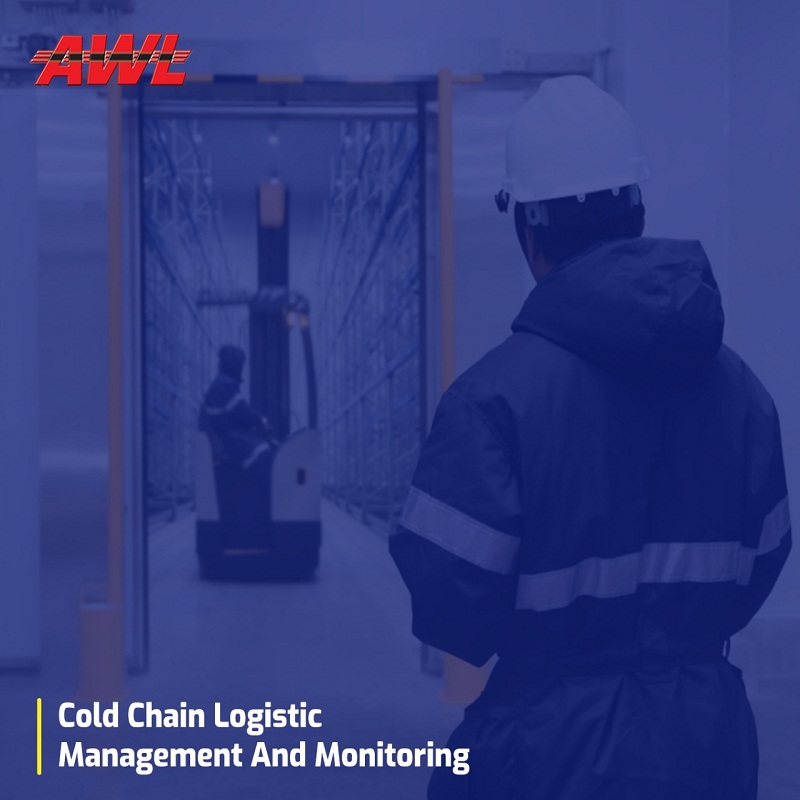

Even though globalization has largely eliminated the distance between different regions of the world, the geographical barriers still can not be avoided. When it comes to the transportation of goods within these regions, those labeled as perishables are at a greater risk of getting damaged or compromised due to their temperature sensitivity. Cold chain logistics plays a vital role in ensuring the integrity of these perishable products through their refrigerated and thermal logistical planning and transportation. Cold chain products are transported through refrigerated cargo ships, railcars, trucks, reefers, and air cargo.
Cold chain logistic management is both a science and process that involves a chain of tasks to prepare, store, and safely transport temperature-sensitive goods and products along the supply chain. It heavily relies on advanced technologies to establish a link between temperature with perishable products. State-of-art temperature-controlled and refrigerated warehouses have made it possible to transport vital cargo, perishable foods, and biopharmaceuticals across the globe through diverse climatic conditions. Cold chain logistics essentially involves the storage and transportation of the following products:
● Fruits & Vegetables
● Processed Food Items
● Meat & Seafood
● Poultry & Dairy
● High-end Food Products
Pharmaceuticals
● Vaccines
● Healthcare Products
● Biologics
Temperature Sensitive Goods
● Synthetic Items
● Plants & Flowers
● Electrical Components
● Paints & Volatile Chemicals
Over the years, the cold chain logistics industry has greatly evolved due to the surge in the demand for temperature-sensitive logistics that can ensure efficient and safe transportation of large quantities of perishable meds and foods to the remotest corners of the globe.
Primary Elements of Cold Chain Logistics
The cold chain logistics comprises of seven main components, all of them must work seamlessly to ensure smooth and safe transportation and storage of cold chain goods:
Storage
While there is a common belief that cold chain operations generally begin when temperature-controlled goods are dispatched from the end of the manufacture, it isn't the case. It actually starts from the moment the products are stored in the refrigerated warehouse. Some of the common types of refrigerated facilities include cooled containers, cold rooms, chillers, cold boxes, blast freezers, and vaccine carriers.
Packaging
To manage the quality and integrity of the temperature-sensitive products, the packaging must be up to the mark. Adequate packaging helps ensure energy-efficient storage of goods and eliminates the risk involved with product contamination.
Monitoring
Based on the products manufactured in cold chain logistics, suppliers are required to constantly track and monitor information like temperature ranges and environmental parameters, like the humidity levels that can jeopardize the quality of temperature-sensitive express cargo, regarding their shipments. This crucial information helps shippers to audit their supply chain operations and identify the efficiencies in the system. Moving cargo across the cold chain without undergoing any obstacles or temperature abnormalities mandates the establishment of an explicit logistical operation to strengthen the cold chain product integrity.
To simplify cold chain management, data logging is one of the key technologies that can be used as it ensures flexible monitoring and helps with quality assurance of the goods.
Transportation
In cold chain logistics, different transport solutions are used to ensure a safe and ingenious movement of perishable goods from the storage point to different consumer markets. Such products can be moved by road, rail, air, and/or sea. Different types of products require the outlay of different temperature levels to assure their quality throughout the transport chain. The general temperature standards are “banana” (13 °C), “chill” (2 °C), “frozen” (-18 °C) and “deep-frozen” (-29 °C), each associated with distinct product groups. Keeping up with the temperature standards is significant to the integrity of the cargo along the supply chain, and for perishables, it also helps in increasing the optimal shelf life.
Specialized and efficient transport vehicles and equipment like refrigerator trucks and vans are used to maintain the goodness and safety of the products.
Customer Clearance
On the basis of geographical constraints, cold chain logistics can run on a regional, national and global level. While it's local when the production point is close to the consumption point, it becomes global when the products are to be moved from one country to another. Some domestic supply chains may require a single mode of transportation.
For the global cold chain supply, suppliers of sensitive cold chain cargo must be required to clear the customs before delivering shipments to foreign jurisdictions and distant markets. Global cold chain network allows a smooth distribution of vaccines and other pharmaceutical products from one large facility to the remotest corner of the world.
A trained and professional cold chain service provider familiar with the complexities of temperature-sensitive products can easily handle the customs paperwork to curtail uncertainties regarding the shipment process that may stem due to the inability to satisfy the relevant international shipping requirements or in case of unexpected incidents.
Product Handling
In cold chain logistics, temperature-controlled products are transported along with different points of the chain. For this, material-handling equipment, like shipping crates, boxes, and pallets services, and conveyor belt systems are used. If these types of equipment aren't available, shippers would consume a lot of time to complete the delivery of the products and it will also be a lot more difficult for them to initiate quick deliveries and avoid loss of shipment.
Delivery
Cold chain management also includes delivery to end customers based on their preferred shipping methods as well as communication of storage requirements.
Conclusion
Cold chain logistics is crucial to enhancing global food security, supply chain, adequate nutrition, and medications to the isolated areas of the globe. The steady surge in standards of living will remain an important driver for years in the thriving demand for perishable goods and the cold chain logistics aiding their conveyance.
Also Read: Top Trends in Cold Chain Logistics
Also Read: What are Potential Risks in Cold Chain Management?
Also Read: A Guide to Cold Chain Logistics

